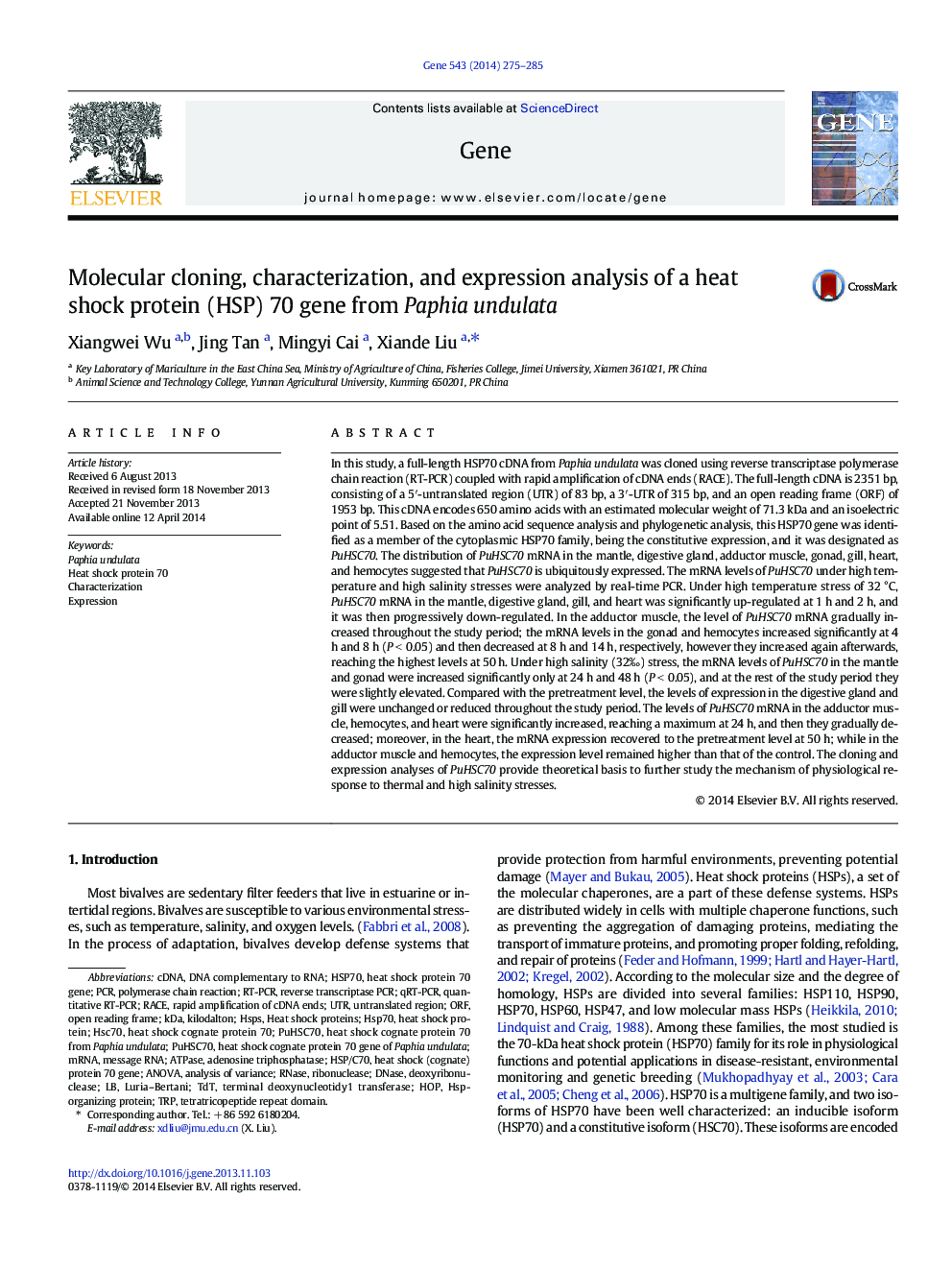| کد مقاله | کد نشریه | سال انتشار | مقاله انگلیسی | نسخه تمام متن |
|---|---|---|---|---|
| 2816381 | 1159930 | 2014 | 11 صفحه PDF | دانلود رایگان |

• A full-length heat shock protein 70 cDNA in Paphia undulata was cloned.
• The HSP70 mRNA is ubiquitously expressed in P. undulata.
• The HSP70 mRNA initially increased and then decreased under heat shock stress.
• The HSP70 mRNA decreased under high salinity stress in the gill and digestive gland.
In this study, a full-length HSP70 cDNA from Paphia undulata was cloned using reverse transcriptase polymerase chain reaction (RT-PCR) coupled with rapid amplification of cDNA ends (RACE). The full-length cDNA is 2351 bp, consisting of a 5′-untranslated region (UTR) of 83 bp, a 3′-UTR of 315 bp, and an open reading frame (ORF) of 1953 bp. This cDNA encodes 650 amino acids with an estimated molecular weight of 71.3 kDa and an isoelectric point of 5.51. Based on the amino acid sequence analysis and phylogenetic analysis, this HSP70 gene was identified as a member of the cytoplasmic HSP70 family, being the constitutive expression, and it was designated as PuHSC70. The distribution of PuHSC70 mRNA in the mantle, digestive gland, adductor muscle, gonad, gill, heart, and hemocytes suggested that PuHSC70 is ubiquitously expressed. The mRNA levels of PuHSC70 under high temperature and high salinity stresses were analyzed by real-time PCR. Under high temperature stress of 32 °C, PuHSC70 mRNA in the mantle, digestive gland, gill, and heart was significantly up-regulated at 1 h and 2 h, and it was then progressively down-regulated. In the adductor muscle, the level of PuHSC70 mRNA gradually increased throughout the study period; the mRNA levels in the gonad and hemocytes increased significantly at 4 h and 8 h (P < 0.05) and then decreased at 8 h and 14 h, respectively, however they increased again afterwards, reaching the highest levels at 50 h. Under high salinity (32‰) stress, the mRNA levels of PuHSC70 in the mantle and gonad were increased significantly only at 24 h and 48 h (P < 0.05), and at the rest of the study period they were slightly elevated. Compared with the pretreatment level, the levels of expression in the digestive gland and gill were unchanged or reduced throughout the study period. The levels of PuHSC70 mRNA in the adductor muscle, hemocytes, and heart were significantly increased, reaching a maximum at 24 h, and then they gradually decreased; moreover, in the heart, the mRNA expression recovered to the pretreatment level at 50 h; while in the adductor muscle and hemocytes, the expression level remained higher than that of the control. The cloning and expression analyses of PuHSC70 provide theoretical basis to further study the mechanism of physiological response to thermal and high salinity stresses.
Journal: Gene - Volume 543, Issue 2, 15 June 2014, Pages 275–285